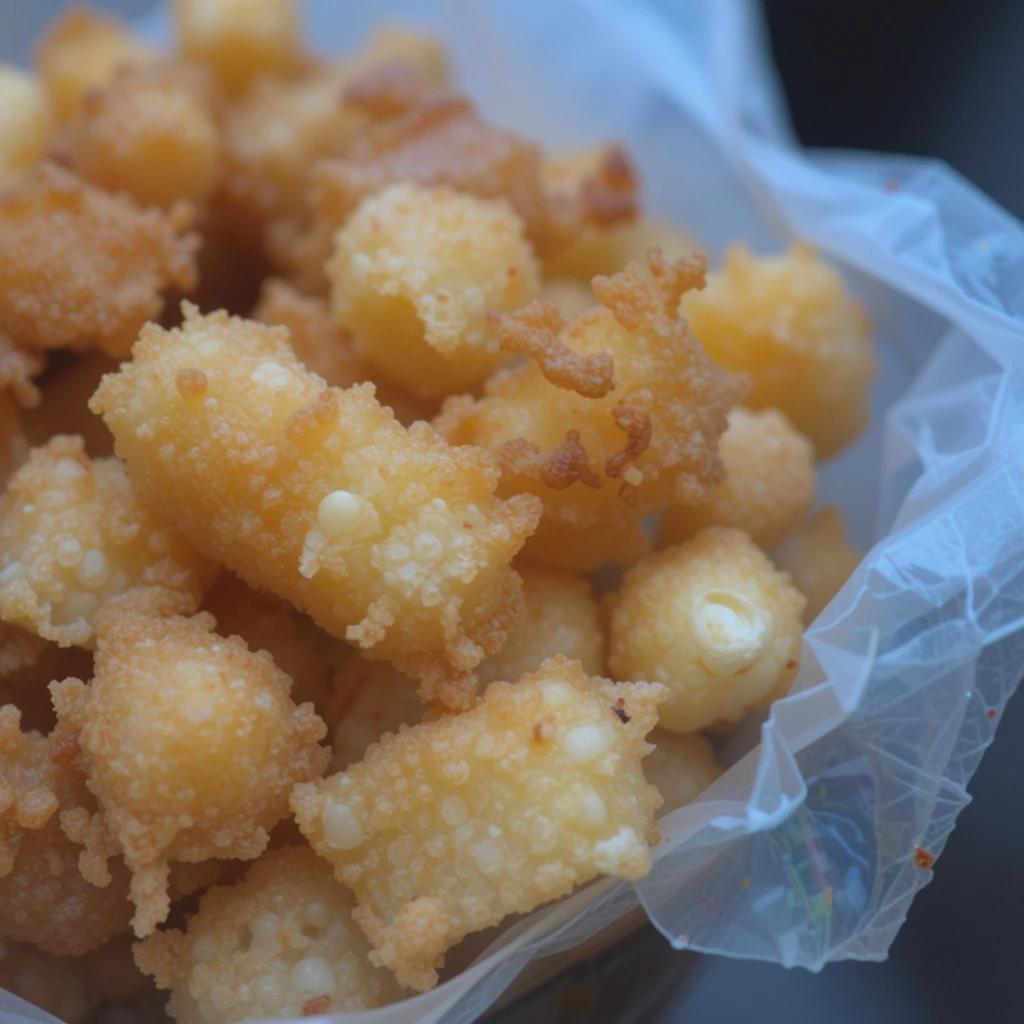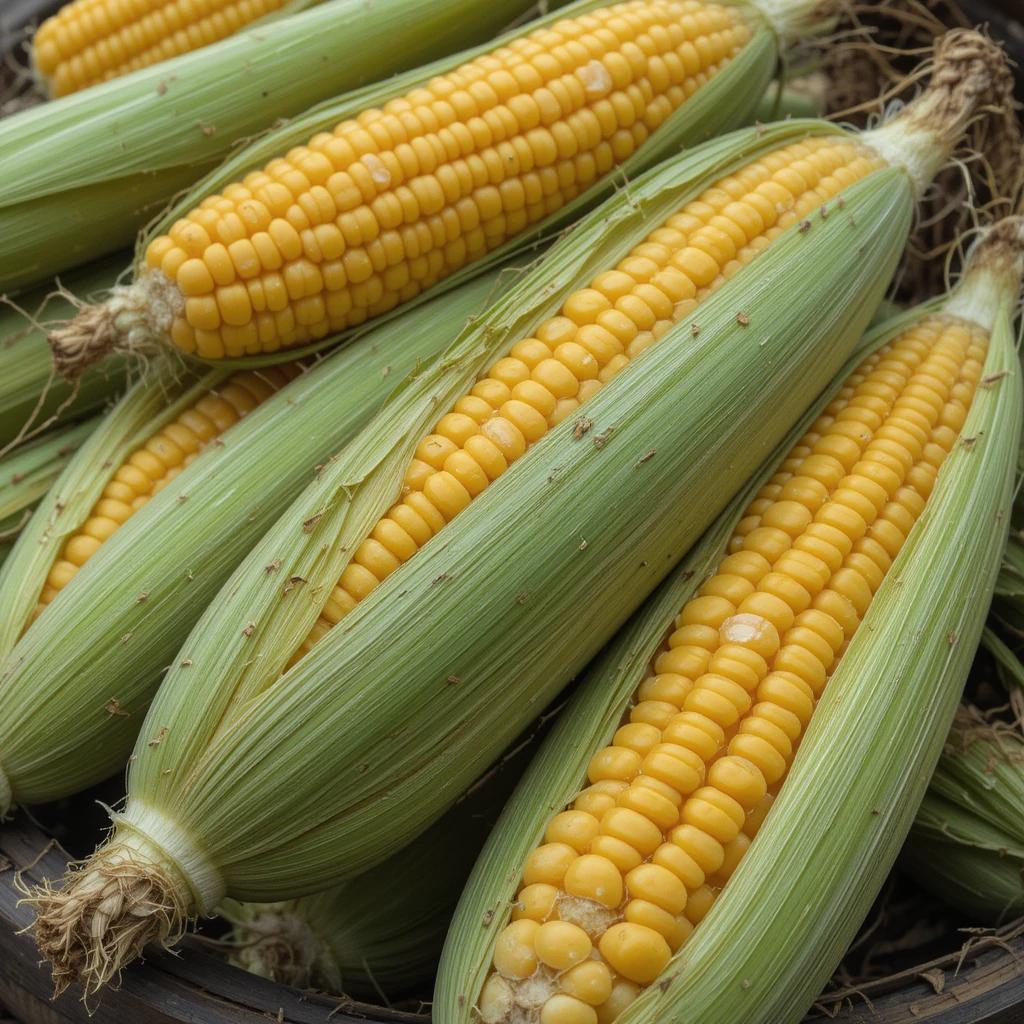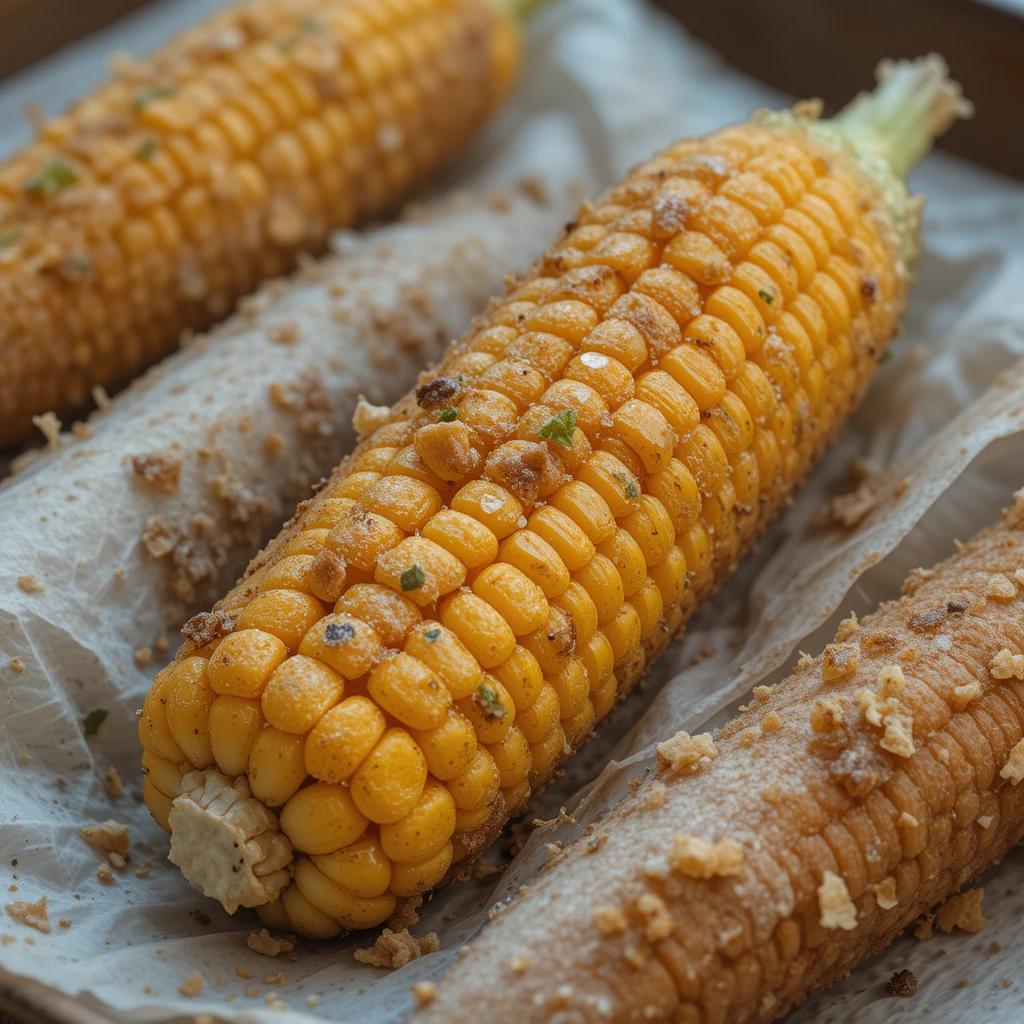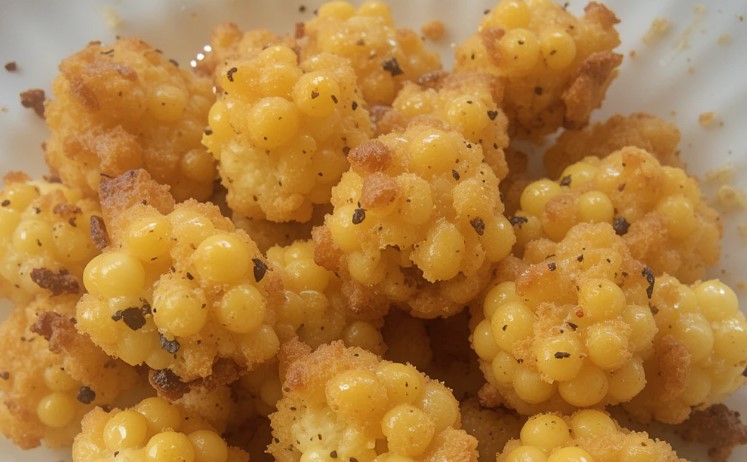What Is Fried Corn?
Fried corn is a savory dish made by sautéing kernels of corn in butter, oil, or bacon grease, often seasoned with salt, pepper, and a variety of spices or herbs. It can be prepared using fresh, canned, or frozen corn, making it a versatile and accessible dish. Fried corn is known for its rich flavor and slightly crispy texture, which develops as the natural sugars in the corn caramelize during the cooking process. It is often enhanced with ingredients like onions, garlic, bell peppers, or even cheese to elevate its taste and appeal.
Origins of Fried Corn
The origins of fried corn can be traced back to traditional Southern cooking in the United States. Historically, it was a staple in rural communities where corn was abundant and served as a vital source of sustenance. Southern fried corn, also known as skillet corn, often incorporates bacon drippings and cream to create a rich, hearty dish. However, variations of fried corn exist across different cultures. For instance, in Latin America, similar dishes like “elote asado” (grilled corn) are popular, while in Asia, stir-fried corn with soy sauce and seasonings is a common side dish.
The concept of frying corn stems from a desire to preserve the flavor and enhance the texture of corn through cooking methods that highlight its natural sweetness and versatility. Over time, this simple yet flavorful dish gained popularity, becoming a cherished part of culinary traditions worldwide.
Why Fried Corn is Popular Worldwide
Fried corn’s popularity transcends borders due to its simplicity, adaptability, and universal appeal. Its ability to pair well with a wide variety of dishes—from barbecues and grilled meats to vegetarian meals—makes it a beloved side dish. Here are a few reasons for its global popularity:
- Versatility: Fried corn can be customized with local spices, herbs, and ingredients, allowing each culture to create its unique version of the dish.
- Ease of Preparation: The dish is quick and easy to prepare, requiring minimal ingredients and cooking time.
- Flavorful Appeal: The caramelized sweetness of corn combined with savory seasonings creates a balanced and satisfying flavor profile.
- Nutritional Value: Corn is rich in fiber, vitamins, and minerals, making fried corn a relatively healthy addition to meals when prepared thoughtfully.
- Cultural Adaptability: Fried corn is easily integrated into various cuisines, aligning with local tastes and traditions.
Fried corn’s enduring appeal lies in its ability to celebrate the natural sweetness of corn while offering endless possibilities for creative variations. It’s a dish that bridges cultures, bringing a taste of comfort and delight to tables around the globe.
Main Content: Types of Corn Used in Fried Corn
When preparing fried corn, the type of corn chosen significantly influences the dish’s flavor, texture, and overall appeal. Different types of corn bring unique characteristics, and understanding these varieties can help enhance your culinary creations.
Sweet Corn
Sweet corn is the most commonly used type for fried corn recipes. Known for its tender kernels and natural sweetness, it is ideal for dishes that aim to highlight the corn’s fresh, sugary flavor. Sweet corn is typically harvested while the kernels are young and juicy, making it perfect for caramelization during frying.
Key Features:
- Bright yellow or bi-colored kernels.
- Naturally sweet and soft texture.
- Best used fresh during peak summer months, though frozen or canned options work well year-round.
Ideal For: Fried corn with minimal seasoning to let the natural sweetness shine, or recipes that incorporate butter, cream, and light spices.
Field Corn
Field corn, also known as dent corn, is less sweet than sweet corn and has a firmer texture. It is primarily grown for livestock feed and industrial uses, but when harvested early (as “roasting ears”), it can be used for cooking. Field corn is starchier and has a heartier flavor, which works well in rustic or savory fried corn dishes.
Key Features:
- Larger, tougher kernels with a more robust taste.
- High starch content.
- Often needs additional preparation, such as soaking or boiling, before frying.
Ideal For: Savory fried corn recipes with bold seasonings like garlic, onions, or chili, where the corn’s hearty texture can stand up to strong flavors.

Baby Corn
Baby corn is harvested early while the ears are still immature, resulting in small, tender cobs that are entirely edible. This type of corn is often used in Asian-inspired stir-fries and fusion dishes, but it can also be fried to create unique, crunchy textures and delicate flavors.
Key Features:
- Tiny, fully edible cobs.
- Mild and slightly sweet flavor.
- Crisp yet tender texture.
Ideal For: Stir-fried corn dishes with soy sauce, sesame oil, or other Asian seasonings, or as a decorative and crunchy addition to fried corn recipes.
Each type of corn offers a distinct flavor and texture profile, allowing you to adapt fried corn recipes to suit your taste preferences and the occasion. Whether you prefer the sugary burst of sweet corn, the earthy robustness of field corn, or the delicate crunch of baby corn, there’s a variety to elevate your dish.
The Science Behind Frying Corn
Frying corn is more than just a cooking method; it’s a process that transforms the texture, flavor, and nutritional profile of this versatile grain. Understanding what happens during frying can help you appreciate the dish on a deeper level.
How Corn Changes When Fried
- Caramelization: When corn is fried, the heat causes the natural sugars in the kernels to caramelize. This process creates a golden-brown color and enhances the sweetness of the corn, making it more flavorful. The Maillard reaction, a chemical reaction between sugars and amino acids, also contributes to the rich, savory notes that develop during frying.
- Texture Transformation: The heat from frying causes the moisture in the corn kernels to evaporate, giving them a slightly crispy or chewy texture, depending on the cooking time. Fresh corn maintains its juiciness while forming a lightly browned exterior, whereas frozen or canned corn may result in a softer texture.
- Flavor Enhancement: Frying concentrates the flavors of the corn by reducing water content and amplifying its natural sweetness. The addition of fats like butter, oil, or bacon grease further enriches the taste, blending savory and sweet notes.
- Incorporation of Aromatics: Frying often involves aromatics like onions, garlic, or herbs. The heat releases their essential oils, which infuse the corn with complementary flavors, making the dish more complex and appetizing.
Nutritional Impact of Frying
- Caloric Increase: Frying typically involves fats like butter, oil, or bacon grease, which add calories to the dish. The amount of fat used determines how much the calorie count increases.
- Loss of Water-Soluble Nutrients: Prolonged exposure to heat can cause a slight loss of water-soluble nutrients like vitamin C and some B vitamins. However, because corn is usually fried for a short time, this impact is minimal.
- Retention of Fiber and Minerals: The fiber and minerals in corn, such as potassium, magnesium, and phosphorus, remain intact during frying. These nutrients contribute to a healthy digestive system and overall well-being.
- Fat Absorption: Depending on the method and temperature, corn may absorb some of the fat used for frying. Cooking at the right temperature minimizes oil absorption and ensures a crispier, less greasy result.
- Improved Bioavailability: Frying corn can enhance the bioavailability of certain nutrients. For instance, the heat may increase the absorption of antioxidants like lutein and zeaxanthin, which are beneficial for eye health.
How to Make Fried Corn at Home
Fried corn is a simple, flavorful dish that you can easily prepare at home. Whether you’re using fresh, frozen, or canned corn, it’s a versatile recipe with plenty of room for creativity.
Ingredients Needed
For a basic fried corn recipe, you’ll need the following:
- Corn: 4 cups of fresh, frozen, or canned corn (drained if canned).
- Butter: 2-3 tablespoons for a rich flavor.
- Oil or Bacon Grease: 1 tablespoon (optional, for added flavor).
- Onion: 1 small, finely chopped (optional).
- Garlic: 2 cloves, minced (optional).
- Salt and Pepper: To taste.
- Optional Seasonings: Paprika, cayenne pepper, or herbs like parsley or thyme.
- Optional Additions: Crumbled bacon, diced bell peppers, or shredded cheese.
Step-by-Step Recipe
- Prepare the Corn:
- If using fresh corn, shuck the ears and remove the kernels with a sharp knife.
- If using frozen corn, thaw it and drain any excess moisture.
- If using canned corn, rinse and drain well.
- Heat the Pan:
- Heat a large skillet over medium-high heat.
- Add butter and oil (or bacon grease) to the pan, allowing it to melt and heat evenly.
- Cook the Aromatics (Optional):
- Add chopped onion and garlic to the pan.
- Sauté for 2-3 minutes until fragrant and lightly golden.
- Add the Corn:
- Pour the corn into the skillet, spreading it out in an even layer.
- Cook without stirring for 2-3 minutes to allow some kernels to brown.
- Stir and Season:
- Stir the corn and continue frying for another 5-7 minutes, stirring occasionally.
- Season with salt, pepper, and any optional spices like paprika or cayenne.
- Finish and Serve:
- Once the corn is golden and caramelized, remove it from the heat.
- Garnish with fresh herbs, crumbled bacon, or shredded cheese, if desired.
- Serve hot as a side dish or topping for salads, tacos, or rice bowls.
Variations to Try
- Creamy Fried Corn:
- Stir in ¼ cup heavy cream or sour cream during the last few minutes of cooking for a creamy texture.
- Add a sprinkle of Parmesan cheese for extra richness.
- Mexican-Style Fried Corn:
- Toss the corn with chili powder, lime juice, and cotija cheese after frying.
- Garnish with chopped cilantro for an authentic twist.
- Spicy Fried Corn:
- Add chopped jalapeños or red pepper flakes while frying for a spicy kick.
- Pair with smoky paprika for added depth.
- Vegetable Medley Fried Corn:
- Mix in diced bell peppers, zucchini, or cherry tomatoes for a colorful and nutritious dish.
- Asian-Inspired Fried Corn:
- Season with soy sauce and sesame oil, and garnish with sliced green onions and sesame seeds.
- Southern Skillet Corn:
- Cook the corn in bacon grease and mix in crumbled bacon for a classic Southern flavor.
- Add a touch of cream for an authentic skillet corn experience.
Health and Nutrition of Fried Corn
Fried corn is a flavorful dish that, when prepared thoughtfully, can be a part of a balanced diet. Understanding its nutritional components and health benefits can help you enjoy this dish responsibly while maximizing its positive impact on your well-being.

Nutritional Benefits of Corn
- Rich in Carbohydrates: Corn is a natural source of energy, thanks to its high carbohydrate content. It provides the body with the fuel needed for daily activities and is especially beneficial for active individuals.
- High in Fiber: The dietary fiber in corn supports healthy digestion, regulates blood sugar levels, and promotes a feeling of fullness, which can aid in weight management.
- Packed with Vitamins: Corn contains essential vitamins such as:
- Vitamin C: Supports immune health and acts as an antioxidant.
- B Vitamins: Like thiamin and folate, which are vital for energy production and brain health.
- Mineral Content: Corn is a good source of minerals like potassium, magnesium, and phosphorus, which contribute to bone health, muscle function, and maintaining healthy blood pressure.
- Rich in Antioxidants: Corn contains antioxidants such as lutein and zeaxanthin, which are known for supporting eye health and reducing the risk of age-related macular degeneration.
Impact of Frying on Nutrition
- Calorie Increase: Frying corn adds calories due to the fats used during cooking. While fats are necessary for absorbing fat-soluble vitamins, excessive use can lead to higher calorie consumption, which may not be ideal for those on calorie-restricted diets.
- Retention of Fiber and Protein: Corn’s fiber and protein content remain intact during frying, maintaining its role as a satisfying and nutritious dish.
- Vitamin Stability: While some water-soluble vitamins like Vitamin C may decrease slightly due to heat exposure, the overall nutrient loss is minimal if frying is done quickly.
- Fats and Flavor: Using healthy fats, such as olive oil or avocado oil, can make fried corn a heart-friendly option. Alternatively, opting for minimal butter or oil can reduce calorie density while retaining flavor.
Healthy Tips for Cooking Fried Corn
- Choose Fresh Ingredients: Opt for fresh or frozen corn to maximize nutrient retention and avoid unnecessary preservatives.
- Use Healthy Fats: Replace butter or bacon grease with healthier options like olive oil or coconut oil to reduce saturated fat intake.
- Limit Salt and Add Herbs: To reduce sodium, limit salt and enhance flavor with fresh herbs like parsley, cilantro, or thyme.
- Add Vegetables: Mixing fried corn with vegetables like bell peppers, zucchini, or spinach boosts its nutritional value by adding fiber, vitamins, and antioxidants.
- Control Portion Sizes: While fried corn is delicious, serving it as a side dish ensures it remains a part of a balanced meal rather than a calorie-heavy centerpiece.
Serving and Pairing Suggestions for Fried Corn
Fried corn is a versatile and flavorful dish that complements a wide variety of meals. Whether served as a side dish, a topping, or incorporated into the main course, its natural sweetness and savory notes make it a favorite in many cuisines. Here are some ideas for serving and pairing fried corn to enhance its appeal.
Serving Suggestions
- As a Side Dish:
- Serve fried corn alongside grilled or roasted meats like chicken, steak, or barbecue ribs.
- Pair it with seafood, such as grilled shrimp, salmon, or blackened catfish, for a fresh and hearty meal.
- Add it to holiday spreads as a side dish to turkey, ham, or roasted vegetables.
- Taco or Burrito Topping:
- Use fried corn as a topping for tacos, burritos, or enchiladas to add a sweet and smoky dimension.
- Combine it with fresh cilantro, lime juice, and diced onions for a Mexican-style garnish.
- As a Salad Ingredient:
- Mix fried corn into green salads for a pop of sweetness and texture.
- Add it to pasta salads or grain bowls with quinoa or couscous for added flavor.
- As a Breakfast or Brunch Addition:
- Serve it as a side to eggs, omelets, or breakfast casseroles.
- Incorporate it into cornbread batter or pancakes for a unique brunch dish.
- Standalone Snack:
- Enjoy fried corn on its own as a warm, comforting snack.
- Add a sprinkle of cheese or a dash of hot sauce for an extra burst of flavor.
Pairing Suggestions
With Grains:
- Pair fried corn with rice pilaf, quinoa, or wild rice for a hearty, satisfying combination.
- Serve it with cornbread or crusty bread to soak up the buttery goodness.
With Soups and Stews:
- Serve fried corn alongside chili, gumbo, or hearty vegetable soups.
- Pair it with creamy soups like tomato or butternut squash to balance the textures.
With Fresh Vegetables:
- Combine fried corn with roasted or grilled vegetables like zucchini, bell peppers, or asparagus for a colorful plate.
- Pair it with a fresh tomato and cucumber salad to add a refreshing contrast.
With Cheese and Dairy:
- Top fried corn with shredded cheddar, Parmesan, or crumbled feta for extra richness.
- Pair it with creamy dips, sour cream, or yogurt-based sauces for a tangy complement.
With Bold Flavors:
- Balance the sweetness of fried corn with spicy or smoky flavors, such as Cajun-seasoned meats or dishes with chipotle peppers.
- Pair it with tangy pickled vegetables or citrus-based marinades for a refreshing twist.

FAQs About Fried Corn
1. Can I use frozen corn for frying?
Yes, frozen corn works well for frying and is a convenient option when fresh corn isn’t available. Before frying, thaw the corn and drain any excess moisture to prevent it from becoming soggy during cooking. Frozen corn retains much of its natural sweetness and texture, making it a suitable substitute for fresh corn.
2. What is the best oil for frying corn?
The best oil for frying corn depends on your flavor preferences and dietary needs. Here are some popular options:
- Butter: Adds richness and enhances the natural sweetness of the corn.
- Olive Oil: A heart-healthy option with a mild, savory flavor.
- Bacon Grease: Provides a smoky, Southern-style taste.
- Coconut Oil: Imparts a subtle sweetness and is great for those avoiding dairy.
Choose oils with a medium to high smoke point to prevent burning during frying.
3. How do I store leftover fried corn?
To store leftover fried corn:
- Allow the dish to cool to room temperature.
- Transfer it to an airtight container.
- Refrigerate for up to 3-4 days.
For longer storage, place the fried corn in a freezer-safe container and freeze for up to 2 months. Reheat thoroughly before serving.
4. Is fried corn gluten-free?
Yes, fried corn is naturally gluten-free as corn does not contain gluten. However, be cautious about added ingredients like sauces, seasonings, or bacon that might include gluten-containing additives. Always check labels if you are preparing the dish for someone with gluten sensitivity or celiac disease.
5. What spices go well with fried corn?
A variety of spices and seasonings can elevate the flavor of fried corn. Popular options include:
- Salt and Black Pepper: Classic staples for seasoning.
- Paprika or Smoked Paprika: Adds color and a subtle smoky flavor.
- Garlic Powder: Enhances savory notes.
- Cumin: Adds earthy warmth, especially for Mexican-inspired dishes.
- Cayenne Pepper or Chili Powder: Provides a spicy kick.
- Herbs: Fresh or dried parsley, cilantro, thyme, or rosemary add a refreshing touch. Experiment with different combinations to suit your taste preferences.
6. Can fried corn be reheated?
Yes, fried corn can be reheated easily. Here’s how:
- On the Stove: Heat a skillet over medium heat, adding a small amount of butter or oil to refresh the flavors. Stir frequently until warmed through.
- In the Microwave: Place the fried corn in a microwave-safe dish, cover with a lid or microwave-safe wrap, and heat in short intervals (30 seconds to 1 minute) until hot.
- In the Oven: Spread the corn on a baking sheet, cover with aluminum foil, and bake at 350°F (175°C) for about 10 minutes.
Avoid overcooking to maintain the corn’s texture and prevent it from becoming dry.
Skillet Fried Corn
Conclusion
Fried corn is a delightful and versatile dish that has captured the hearts and taste buds of people worldwide. Its rich flavors, tender texture, and adaptability to various cuisines make it a standout addition to any meal. Whether you’re savoring it as a simple side dish, incorporating it into a hearty salad, or spicing it up with bold seasonings, fried corn offers endless culinary possibilities.
With its nutritional benefits, ease of preparation, and room for creativity, fried corn is not just a comfort food but also a canvas for innovation. By understanding the types of corn, the science behind frying, and the many ways to serve and pair it, you can elevate this humble dish to a flavorful masterpiece.
So, gather your ingredients, experiment with spices, and enjoy the magic of fried corn. Whether you’re cooking for yourself, your family, or a crowd, this dish is sure to bring joy to the table with every golden kernel.
For More Recipes
a pretty life in the suburbs marshmallow vanilla buttercream
mississippi mud pie ice cream
boston cream pie near me
vegan barley soup

